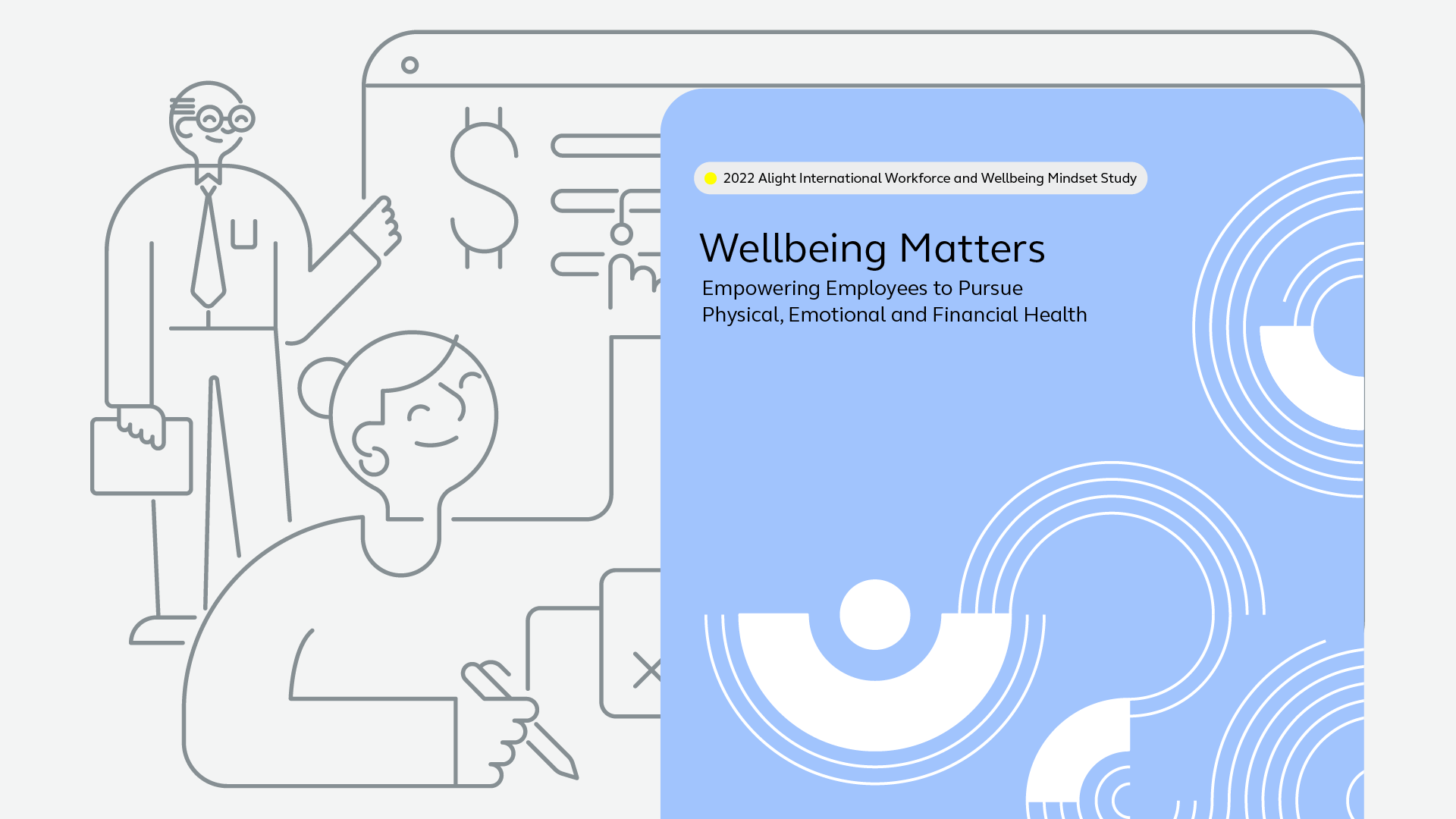
Wellbeing. What image does that word conjure in your mind’s eye?
When most people hear wellbeing, they instinctively think of the physical being – that is, a healthy body.
However, wellbeing has a much broader meaning, consisting of four components: healthy mind, healthy body, healthy wallet and healthy life. Together, they enhance our ability to live our best lives at work and at home.
These four components are intricately intertwined and interdependent. When we’re physically fit and free of disease or disability, we typically feel happier and more in control of our lives.
This positive outlook motivates us to exercise, eat healthy foods, and make smart financial decisions. Meanwhile, poor physical health often leads to depression and anxiety along with a heightened risk of alcoholism, drug abuse and emotional spending.
Financial concerns are nearly always near the top of the list of “things that keep people awake at night.” They toss and turn, wondering how they’re going to make ends meet, cover unexpected home or auto repairs, build their child’s college fund or have enough of a nest egg to retire when and how they want.
Worries about money can lead to anxiety, depression and a decline in physical health. It’s a vicious cycle.

Empowering employees to pursue physical, emotional and financial health
Read the full report: 2022 Alight international workforce and wellbeing mindset study - Wellbeing Matters
Our 2022 International Workforce and Wellbeing Mindset Report surveyed 10,000 employees in five countries – the U.S., U.K., France, Germany and The Netherlands. Across all measures of wellbeing, the results are concerning.
Fewer than half (44%) of employees rate their overall wellbeing positively and just 38% rate their financial wellbeing positively. Nearly three-quarters (73%) report moderate to high stress levels and 34% say they are suffering symptoms of burnout.
Certain demographic groups are feeling even less optimistic. Among Generation Z, for example, just one-third report feeling positive about their overall wellbeing.
Even more concerning, only 28% feel good about their mental and emotional wellbeing, while even fewer (27%) are confident about their financial wellbeing.
Likewise, women lag behind their male counterparts in all measures of wellbeing, especially in financial wellbeing, where just 39% of women feel confident, compared to 51% of men.
In the workplace, the impact of wellbeing is significant. When an employee’s wellbeing is thriving, they perform at a higher level, take fewer sick days, and have lower rates of burnout.
of Gen Z report feeling positive about their overall wellbeing.
When their wellbeing is poor, they struggle to perform their duties, get burned out easily, and are more likely to leave the company. This has become increasingly common in recent years.
As people are seeking greater balance following the COVID-19 pandemic, the compulsion to assess the role of work in their lives has led to serious consequences.
From the Great Resignation, which led to more than 47 million Americans leaving their jobs in 2021 to the “quiet quitting” phenomenon in which employees seek to achieve a healthier work/life balance. By setting boundaries and being less psychologically invested in work, it’s clear the employee-employer relationship has been forever changed.
Promoting wellbeing at work creates a positive environment and helps people thrive.
Fortunately, there are many steps employers can take to foster a culture of wellbeing.
- Take your wellbeing program to the next level by offering disease management, stress reduction, personalized financial planning and health navigation assistance.
- Eliminate any barriers to using these resources to ensure equal access.
- Adopt a life stage approach and strive to meet your commitment to diversity, equity and inclusion.
- Build high levels of trust and support your people in times of crisis with resources and policies that enable them to care for their physical, emotional and financial health.
To learn more about the importance of wellbeing and the findings of the 2022 International Workforce and Wellbeing Mindset study, download our white paper
Wellbeing Matters: Empowering employees to pursue physical, emotional and financial health.


